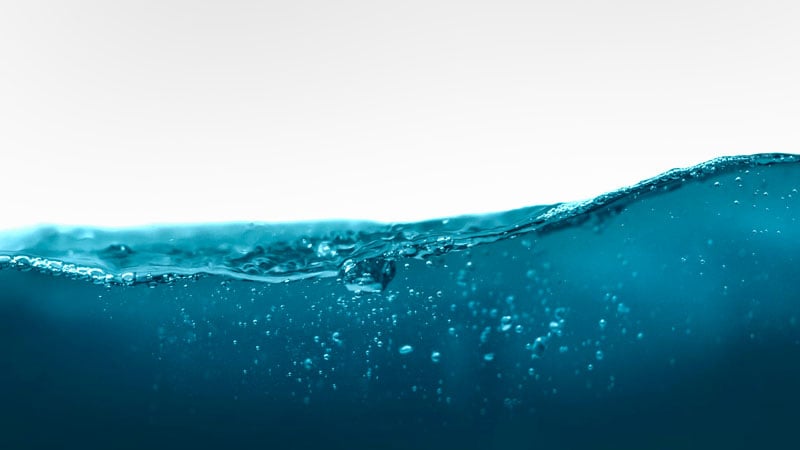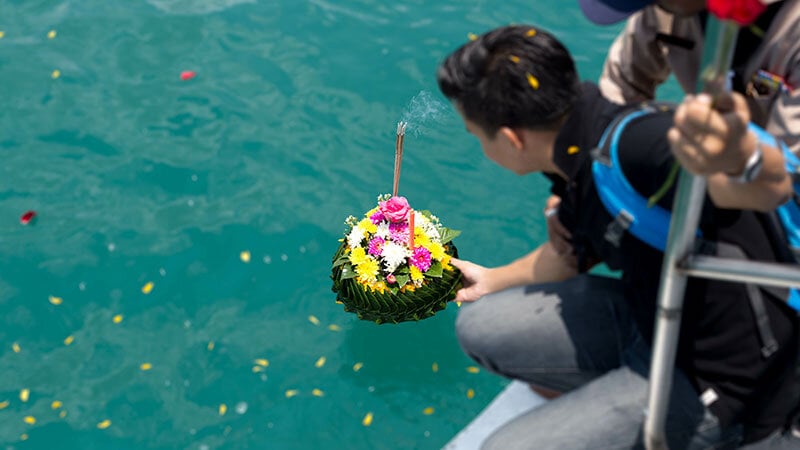What is Aquamation?
Aquamation is an alternative to cremation also known as alkaline hydrolysis. As the name suggests, aquamation is a water-based method of final disposition that has been gaining popularity in recent years.
The Aquamation Process: How Does it Work?
The Aquamation process works through a combination of flowing water, temperature, and potassium hydroxide, also known as lye, an alkaline substance. This combination causes accelerated decomposition of organic matter and does so in a way that’s sustainable and environmentally friendly.
The aquamation machine consists of a stainless steel container in which the remains are placed. The container is filled with water and potassium hydroxide and then heated to about 320 degrees Fahrenheit (160 degrees Celsius). The vessel is agitated and sometimes pressurized to speed up the chemical reactions that cause the remains to break down into their basic components. This process mimics the decomposition that would occur with a ground burial, but completes within hours rather than decades.
Because of its similarity to cremation and use of water, aquamation also goes by the names “aquamation cremation”, “flameless cremation”, and “aquamation water cremation”.
When the aquamation process is complete, the remains have been reduced to a sterile liquid and bone fragments. The liquid consists of the basic building blocks of organic material: amino acids, peptides, salts, and sugars. It is released into a water treatment system or can be used in gardens and other green spaces. The bone fragments are processed into a fine powder and placed into an urn. The urn can then be housed in a sacred space or its contents can be scattered.

Aquamation vs Cremation
While the resulting remains from either process are similar, there are a number of differences regarding aquamation vs. cremation.
Aquamation has a slight edge in terms of environmental benefits relative to cremation. Cremation causes the release of emissions like mercury from dental fillings as well as a number of greenhouse gasses. Aquamation, on the other hand, results in no direct emissions of these substances, though heavy metals like mercury will still remain after the process.
Aquamation uses less energy than cremation does – 1/7th the energy, to be specific. However, it is important to note that aquamation may take between 8 and twenty hours to complete, minimum, whereas cremation only takes a few hours.
If the loved one has a pacemaker installed, it need not be removed for the aquamation process. With flame cremation, such devices need to be extracted before the cremation can occur.
Aquamation results in 20% to 30% more remains than cremation. Consequently, larger, more costly urns are typically needed when the aquamation process is the chosen method of final disposition.
The ash that results from aquamation is a fine powder, unlike cremation ashes which are coarse and sandy.
Because aquamation is a relatively new option, many people are distrustful of it. They incorrectly perceive the process as the liquefaction of human remains. As with any major life decisions, it is important for you to carefully research your options to make an informed choice
Is Embalming Necessary for Aquamation?
Like cremation, it is not necessary to embalm the remains when the aquamation process is chosen. That said, if the deceased’s next of kin choose to embalm the remains, that’s also acceptable. The embalming fluids will be completely broken down into harmless basic components.
Where is Aquamation Legal?
While cremation is legal in all fifty states, aquamation isn’t as widely embraced. Aquamation is legal for final human disposition in states including Alabama, California, Colorado, Florida, Georgia, and Maine. Click through to find a list of states where aquamation is legal.
The list of states where aquamation services are legal is growing. Bill “H.B. No. 680” aims to legalize aquamation in Hawaii, for instance, and it has support from the native Hawaiin population.
How Much Does Aquamation Cost?
Generally speaking, the aquamation cost is greater than standard cremation, although it is far less costly than a traditional burial. Aquamation prices usually range between $2000 – $3000, and since there are less providers offering this service it may cost you even more depending on location. Direct cremation costs in Southern California are typically around $1000. In-ground burial costs start at $9000.
All costs should be summarized, by law, in the General Price list of whichever final disposition method you choose.
About Opal Cremation
Opal Cremation realizes that the passing of a loved one is an emotional and overwhelming experience. Our goal is to help the family and friends of the departed to navigate these most difficult of times. We offer a number of all-inclusive packages for direct cremation services which can be customized for the needs of each family. Arrangements for cremation can be done entirely over the phone and our dedicated care team will guide you through every step of the process. We stand ready to help you 24 hours a day. The stress and burden of cremation arrangements can take a heavy emotional toll. Let Opal Cremation lighten that burden.
For more information, you can visit our support center for additional resources and frequently asked questions regarding cremation.






